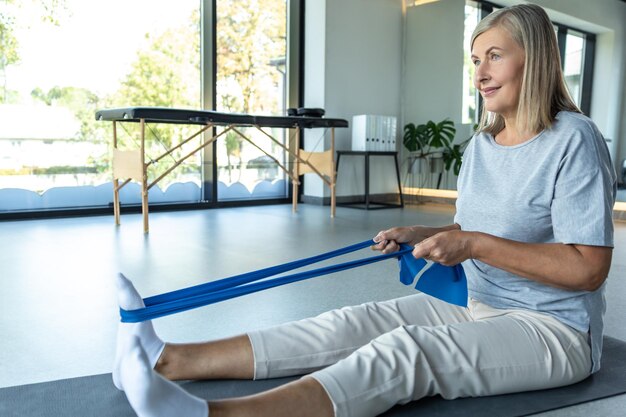Can Pilates Help Manage Osteoporosis? Why It Might Be Just What You Need
If you're living with osteoporosis or trying to prevent it, you're probably always on the lookout for exercises that are both safe and effective. Pilates, a popular form of low-impact exercise, is reputed not just for toning muscles, but also for enhancing flexibility and balance. This makes it a potential game-changer for individuals dealing with osteoporosis, a condition characterized by weakened bones and an increased risk of fractures. But is Pilates truly beneficial for osteoporosis? Let's dive deep into this question, unraveling its potential advantages, safety tips, and more.
Understanding Osteoporosis: The Bone of Contention
Before we explore Pilates, it's crucial to understand what osteoporosis entails. This condition results in decreased bone mass and deterioration of bone tissue, making bones fragile and more likely to fracture. While it's particularly common among older adults, especially postmenopausal women, it can affect anyone. The key to managing osteoporosis involves a combination of medical treatments, dietary changes, and, importantly, the right type of exercise.
The Role of Exercise in Managing Osteoporosis
Exercise plays a pivotal role in maintaining and enhancing bone health. It helps by:
- Increasing bone density: Weight-bearing and resistance exercises stimulate bone formation.
- Enhancing balance and coordination: Reducing fall risks, crucial for individuals with fragile bones.
- Building muscle strength: Supporting and protecting bones.
Balance exercises, resistance training, and weight-bearing workouts are commonly recommended for osteoporosis. Pilates, with its focus on core strength, balance, and low-impact movements, ticks several of these boxes.
How Pilates Benefits Individuals with Osteoporosis
Core Strengthening and Spinal Alignment
Pilates emphasizes core stability and spinal alignment, which is essential for individuals with osteoporosis. A strong core supports the spine and improves posture, a critical factor since spinal fractures are common in osteoporosis sufferers. By focusing on exercises that enhance posture and alignment, Pilates can reduce uneven pressure on the vertebrae, limiting potential fractures.
Improving Balance and Coordination
Falls are a significant risk for those with osteoporosis, as even a minor slip can result in serious fractures. Pilates enhances balance by strengthening the core muscles and improving body awareness, thus helping to prevent falls.
Low-Impact, High Benefit
The gentle, low-impact nature of Pilates makes it suitable for those with delicate bones. Movements are typically performed on a mat or utilizing specialized equipment such as the Pilates reformer, which supports the body while providing resistance.
Flexibility and Muscle Function
Flexibility is another valuable benefit provided by Pilates. Enhanced flexibility can alleviate joint stiffness, which is often accompanied by osteoporosis. Moreover, improved muscle function supports bones and can reduce the propensity for fractures.
Pilates Moves to Consider for Osteoporosis
While Pilates can be advantageous, not all exercises are created equal for osteoporosis. Here are some suggestions for osteoporosis-friendly Pilates movements:
Spine Extensions: Fosters alignment and back strength without adding pressure to the vertebrae.
Leg Circles: Enhances hip mobility, which is crucial for maintaining or recovering balance.
Side-Lying Leg Lifts: Strengthens legs and glutes, offers support to the hips and spine.
Seated Forward Bend: Promotes flexibility in hamstrings and lower back, avoiding undue stress.
Moves to Approach with Caution
Certain Pilates movements that involve spinal flexion or intense abdominal contractions should be avoided by individuals with osteoporosis. These include:
- Roll-ups
- Spine twists with excessive rotation
- Intense forward bends
Always consult with a healthcare provider or a skilled Pilates instructor familiar with osteoporosis to tailor exercises that cater to personal needs and safety.
Implementing a Safe Pilates Routine
Seek Professional Guidance
Starting with a certified Pilates instructor knowledgeable in osteoporosis is crucial. They can adapt exercises to ensure safety, reducing the risk of injury while maximizing benefits. Instructors can offer alternatives to more challenging moves to ensure they fit within safe practice levels for osteoporosis.
Embrace Modifications
Listening to your body and adopting modifications isn't just acceptable but encouraged. Using props like blocks, resistance bands, and cushions can make exercises more accessible and comfortable.
Gradual Progression
Commence with simpler exercises, gradually advancing to more challenging ones as strength and confidence increase. It's important to maintain patience, as consistency and gradual progress lead to the best outcomes.
Integrate into a Comprehensive Plan
While Pilates is beneficial, it should be part of a holistic approach to osteoporosis management. This includes dietary considerations, medical treatments where applicable, and other forms of exercise like walking or tai chi that contribute to overall bone health.
Key Takeaways: Empathy and Empowerment Through Pilates
Exploring Pilates as part of an osteoporosis management routine can be both empowering and beneficial. Here’s a distilled summary of practical takeaways:
- Core focus: Pilates offers core strengthening essential for spine support.
- Balance and coordination: Reduces fall risks due to osteoporosis.
- Low-impact exercise: Suitable for those with fragile bones.
- Professional advice: Ensure exercises are tailored with expert guidance.
- Modify and progress: Adaptations keep workouts safe and personalized.
- Comprehensive strategy: Combine with nutrition, treatments, and other exercise forms.
It's not just about exercising; it's about embracing a lifestyle that promotes bone health, empowerment, and overall well-being. Whether you're a newcomer to exercise or looking to enhance your fitness regime amidst osteoporosis concerns, Pilates might just be the key to better balance, strength, and peace of mind.
Quick Hits Summary:
🔹 Focus on Core for spine support
🔹 Enhance Balance to prevent falls
🔹 Low-Impact Moves for safe exercise
🔹 Seek Expert Guidance for tailored routines
🔹 Modify Exercises to maintain comfort and safety
🔹 Diversify Workouts to support overall bone health

Related Articles
- a Nurse Is Caring For a Client Who Has Osteoporosis.
- a Percutaneous Is Performed To Treat Osteoporosis Related Compression Fractures
- Can Alcohol Cause Osteoporosis
- Can I Do Pilates If I Have Osteoporosis
- Can I Reverse Osteoporosis
- Can Men Get Osteoporosis
- Can Osteoporosis Affect Teeth
- Can Osteoporosis Be Cured
- Can Osteoporosis Be Painful
- Can Osteoporosis Be Reversed